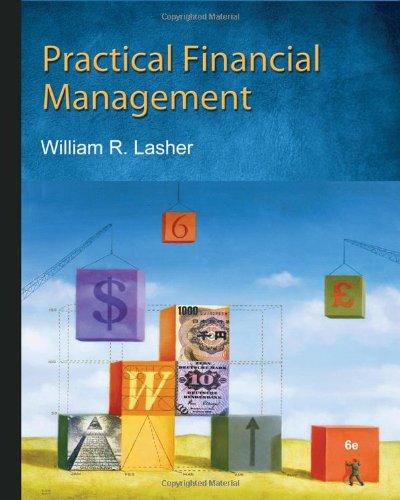Question
Question 26 Of the following investments, which would have the lowest present value? Assume that the effective annual rate for all investments is the same
Question 26
Of the following investments, which would have the lowest present value? Assume that the effective annual rate for all investments is the same and is greater than zero.
Investment A pays $250 at the end of every year for the next 10 years (a total of 10 payments).
Investment B pays $125 at the end of every 6-month period for the next 10 years (a total of 20 payments).
Investment C pays $125 at the beginning of every 6-month period for the next 10 years (a total of 20 payments).
Investment D pays $2,500 at the end of 10 years (just one payment).
Question 32
Which of the following could explain why a business might choose to operate as a corporation rather than as a sole proprietorship or a partnership?
Corporations generally find it relatively difficult to raise large amounts of capital.
Less of a corporation's income is generally subjected to taxes than would be true if the firm were a partnership.
Corporate shareholders escape liability for the firm's debts, but this factor may be offset by the tax disadvantages of the corporate form of organization.
Corporate investors are exposed to unlimited liability.
Question 35
Suppose that Federal Reserve actions have caused an increase in the risk-free rate, rRF. Meanwhile, investors are afraid of a recession, so the market risk premium, (rM - rRF), has increased. Under these conditions, with other things held constant, which of the following statements is most correct?
The required return on all stocks would increase, but the increase would be greatest for stocks with betas of less than 1.0.
The prices of all stocks would decline, but the decline would be greatest for the highest-beta stocks.
The prices of all stocks would increase, but the increase would be greatest for the highest-beta stocks.
The required return on all stocks would increase by the same amount.
Question 39
A real estate investor feels that the cash flow from a property will enable her to pay a lender $20,000 per year, at the end of every year, for eight years. How much should the lender be willing to loan her if he requires a 7.5% annual interest rate (monthly compounded, assuming the first of the eight equal payments arrives one year from the date the loan is disbursed)?
$117,146.07
$115,972.58
$1,440,520.49
$1,426,874.54
Years
Market
Stock A
Stock B
1
0.03
0.16
0.05
2
-0.05
0.20
0.05
3
0.01
0.18
0.05
4
-0.10
0.25
0.05
5
0.06
0.14
0.05
Question 44
You buy a house of $800,000 today. You put a down payment of 20% and borrow a fixed-rate mortgage of $640,000 with monthly payments, annual interest rate of 3.5% and 30 years. After 5 years, market interest rate goes up to 6.5%. How much money will you make in book from the mortgage if you continue to pay the monthly mortgages for the next 25 years and the market interest rate will stay the same as 6.5%?
$94,966
$99,431
$148,431
$188,431
Question 46
Assume that the risk-free rate is 6% and the market risk premium is 5%. Given this information, which of the following statements is CORRECT?
If a stock has a negative beta, its required return must also be negative.
An index fund with beta = 1.0 should have a required return less than 11%.
An index fund with beta = 1.0 should have a required return greater than 11%.
An index fund with beta = 1.0 should have a required return of 11%.
Step by Step Solution
There are 3 Steps involved in it
Step: 1

Get Instant Access to Expert-Tailored Solutions
See step-by-step solutions with expert insights and AI powered tools for academic success
Step: 2

Step: 3

Ace Your Homework with AI
Get the answers you need in no time with our AI-driven, step-by-step assistance
Get Started


